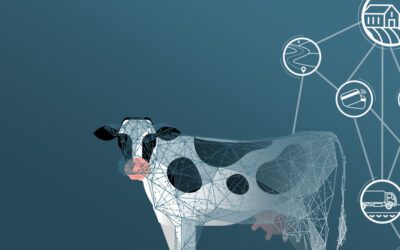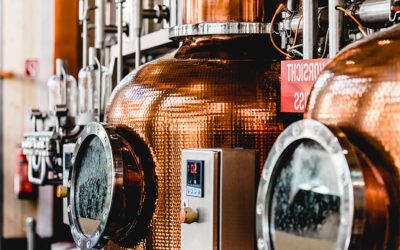Every dairy manufacturing plant has the opportunity to greatly improve its processing potential.
Oftentimes, a plant’s potential is unlocked by simply reducing dairy liquid shrink, improving cheese yields, or recapturing material left on the production floor.
To accomplish this efficiently and effectively, your plant needs to be able to efficiently collect data directly from the production floor and apply real-time feedback in order to make timely adjustments to batches. All these are made possible with the help of an MES.
An MES is a data hub that provides information for action throughout your plant. Its real-time data intelligence capabilities create a communication layer between the systems executing your dairy plant’s processes and the ERP that reports your financial results. The ultimate goal is to help complete your production and provide real-time insights into plant performance, enabling managers and users to improve the results.
Now that you understand what an MES is and how it works in dairy manufacturing, here are four impactful ways an MES can optimize your processing to reduce shrink:
1. Gain Full Visual of Processing
MES provides an easy view to determining the correct process for analyzing the data compiled at the weight and component level throughout production. With this thorough analysis, you will have complete visibility into vessels and outputs to determine your actual mass balance and yield. Mass balance and yield are differences between making and losing and are vital to efficient plant operation.
By identifying your KPIs and benchmarks and measuring your plant’s mass balance consistently, you’ll be able to compare expectations to results and quickly and automatically identify discrepancies.
Plants that utilize the resources of an MES have the benefit of this complete visualization. Where an ERP provides the overall picture of your operation, an MES displays visuals of all the numerous intricate functions and captures real-time production events. By gaining this capability, you will troubleshoot any problems quickly and efficiently without searching through large amounts of data.
2. Track Your Losses During Cleaning
Have you considered how much shrink or loss occurs during your cleaning process? If you have inefficient CIPs, you are probably losing valuable product by simply letting it go down the drain.
Implementing an MES to monitor your processing will ensure optimized and efficient ingredients management, even during the cleaning process. An MES interfaces with strategically placed sensors and monitors throughout your production lines. Your key people will be alerted if and when set parameters are triggered, from excess solids in a wastewater line to insufficient chemical utilization or temperature control in your CIPs.
Furthermore, an MES connects to all measurement devices, including level transmitters and volumetric gauges. Whether you are on-site or in another part of the plant, having full integration will allow you to be alerted the moment a sensor is triggered versus days later when the problem has cost thousands of dollars.
3. Manage Your Recipe
Above all, your batch recipe is crucial to producing a consistent product with perfect mass balance. Once you have achieved that perfect recipe, it is essential to maintain a repeatable process through MES monitoring and tracking.
An MES gives you precise knowledge of all the devices affecting the intricate measurements required for your recipe management – down to the smallest component of the batch. Envision knowing where all the butterfat, protein, and other components are lost. An example of the importance of this tracking is a plant receiving 1 million pounds of milk a day, a 1 percent reduction in solids loss equates to about $400,000 per year in savings.
Furthermore, an MES connects to all measurement devices, including level transmitters and volumetric gauges. Whether you are on-site or in another part of the plant, having full integration will allow you to be alerted the moment a sensor is triggered versus days later when the problem has cost thousands of dollars.
pounds of milk received per day
%
reduction in solids loss
savings per year
4. Making More Product, With Less Through OEE and Visual Factory
Not only does an MES help reduce loss with improved recipe management, but you can also have the advantage of running Overall Equipment Effectiveness (OEE) on your key processes and equipment. OEE provides insights into whether your lines or vessels are running and operating at benchmark speed, in addition to revealing any potential shrink and yield loss in your production lines.
OEE is the overall scorekeeper of any units within your entire plant’s performance. For example, if your goal is to have 85% OEE on a packaging line and you are currently scoring 75%, you must review the cause of your current score. OEE gives complete visibility into line performance to identify any problems, whether quality, speed, or overall availability. Furthermore, determining if there is a maintenance issue, an unexpected downtime, or a possible processing issue causing loss.
Additionally, plants with remote visibility enabled through MES and focusing on OEE will prevent inefficiency through sub-optimal batches and rework without necessitating on-site monitoring of the process.
If your dairy plant struggles with recording actual productive manufacturing time, assigning loss events, downtime, failure, and out of specification for a process or production run, then OEE will make drastic improvements in your plant’s efficiency and drive optimal performance.
Further driving plant efficiency, Visual Factory is a valuable component of an MES system. Imagine having a digitized version of your plant at your figure tips. With a swipe or click, you will have a complete, real-time view of your plant and processes in a much more powerful method than just an HMI screen. Visual Factory means data from every measurement – from PLCs and SCADA systems down to a granular level – is available with an easy-to-use interface for any period back to ten years. Imagine quickly completing a root cause analysis when data is readily available and subsequently identifying why a specific batch does not meet quality or yield expectations.
Using Orbis MES to Reduce Your Shrink
It happens every day in any plant – losing track of product – making your goal of optimizing efficiency and profitability a compounding and frustrating situation for your dairy plant operations.
Orbis MES is an automated solution that significantly improves visualization of all the data in your manufacturing process, monitors systems, helps you reduce overall waste, and provides proactive alerts to production issues.


